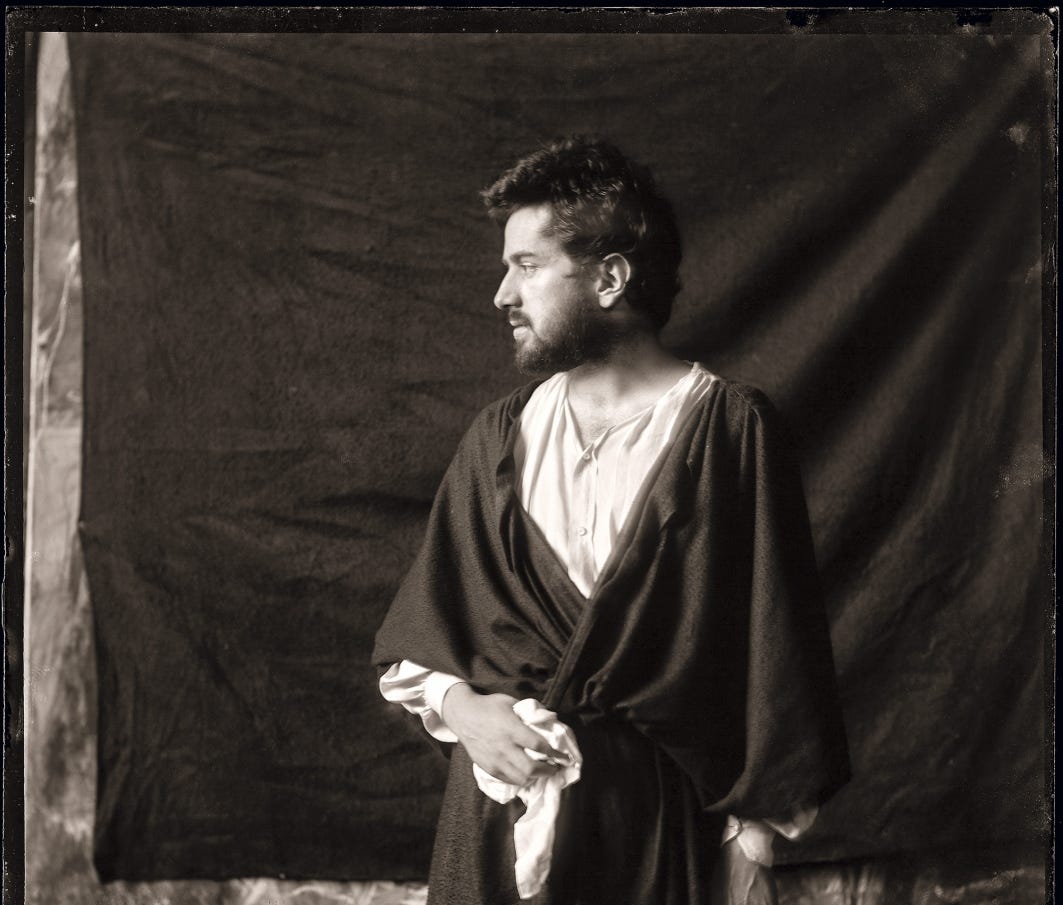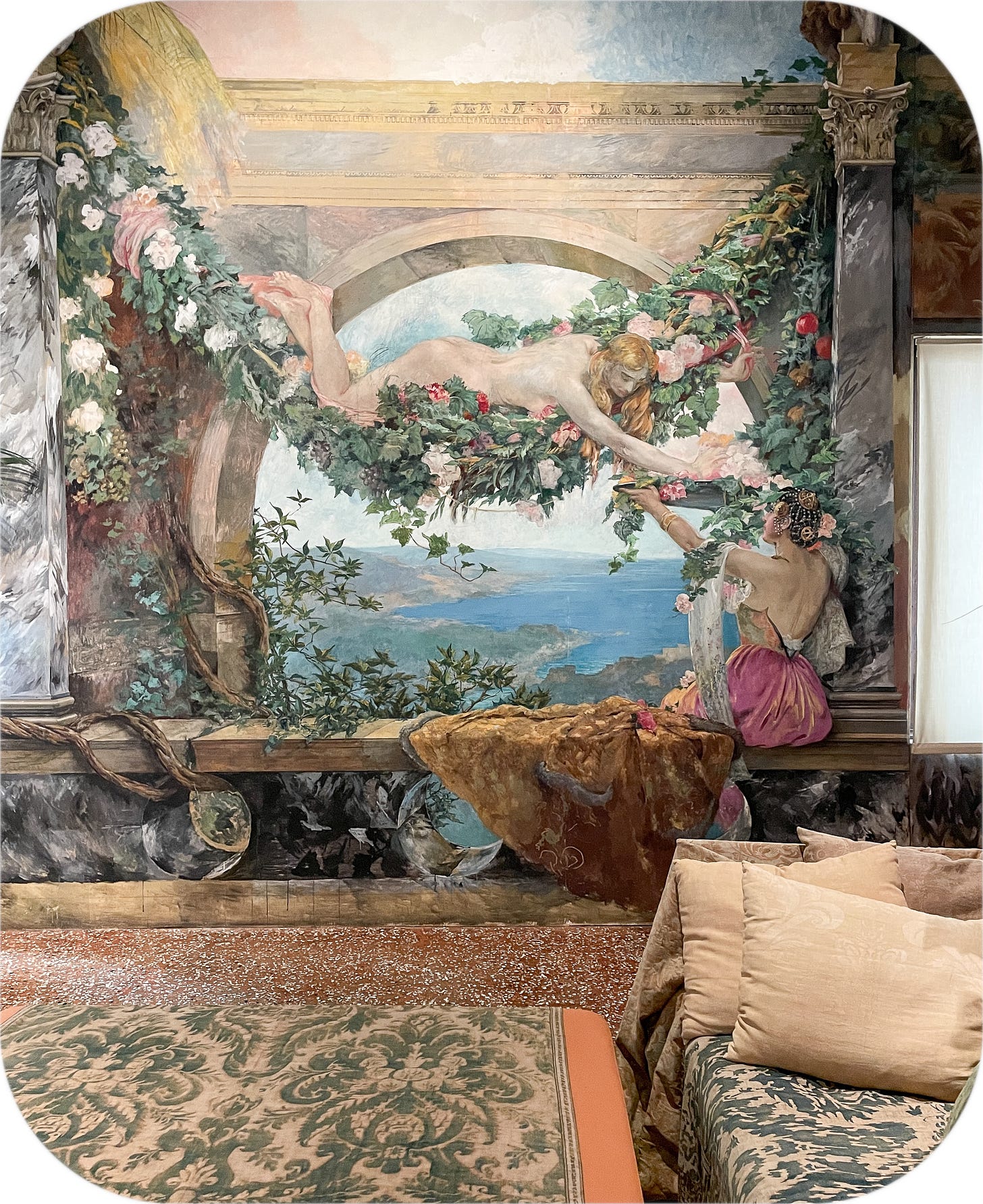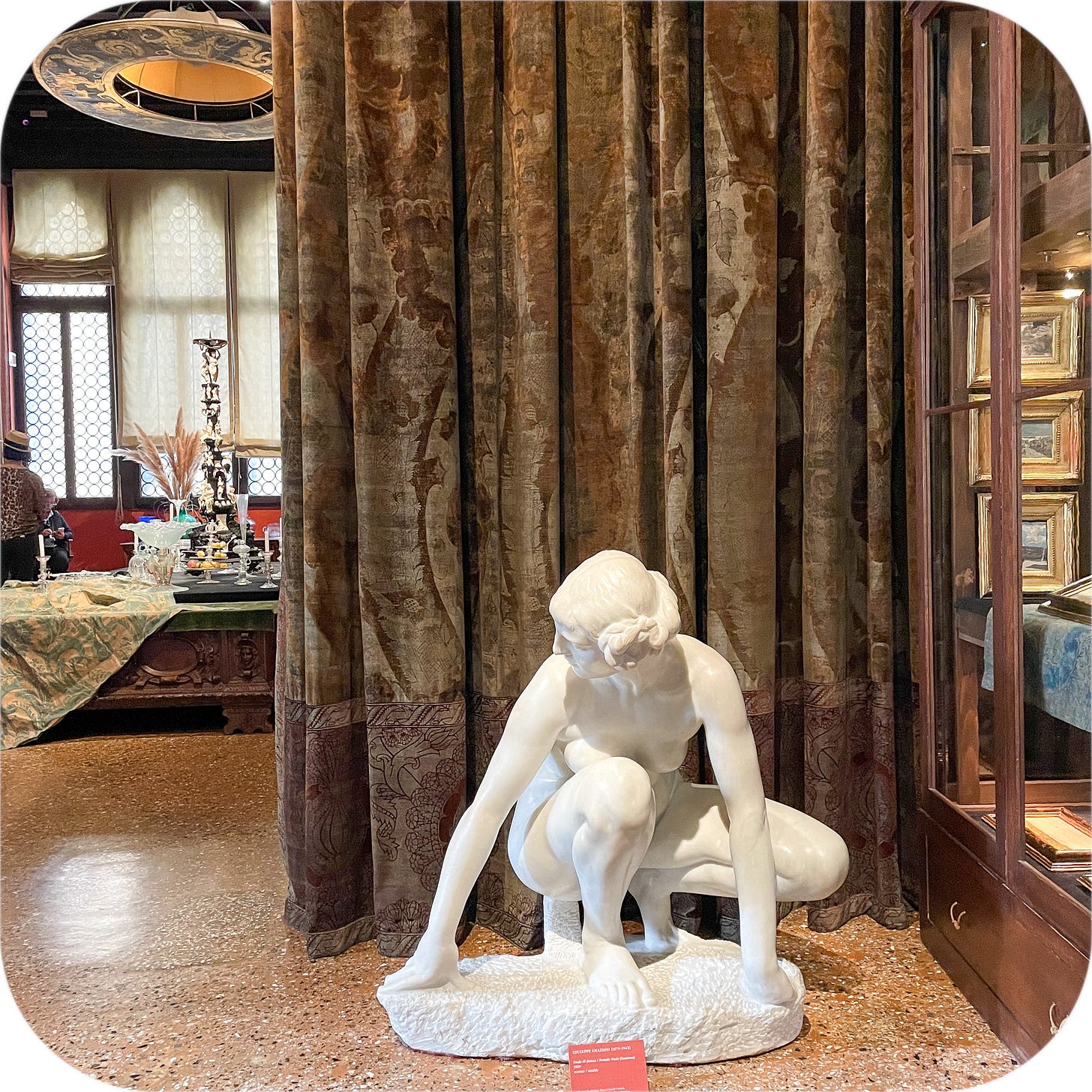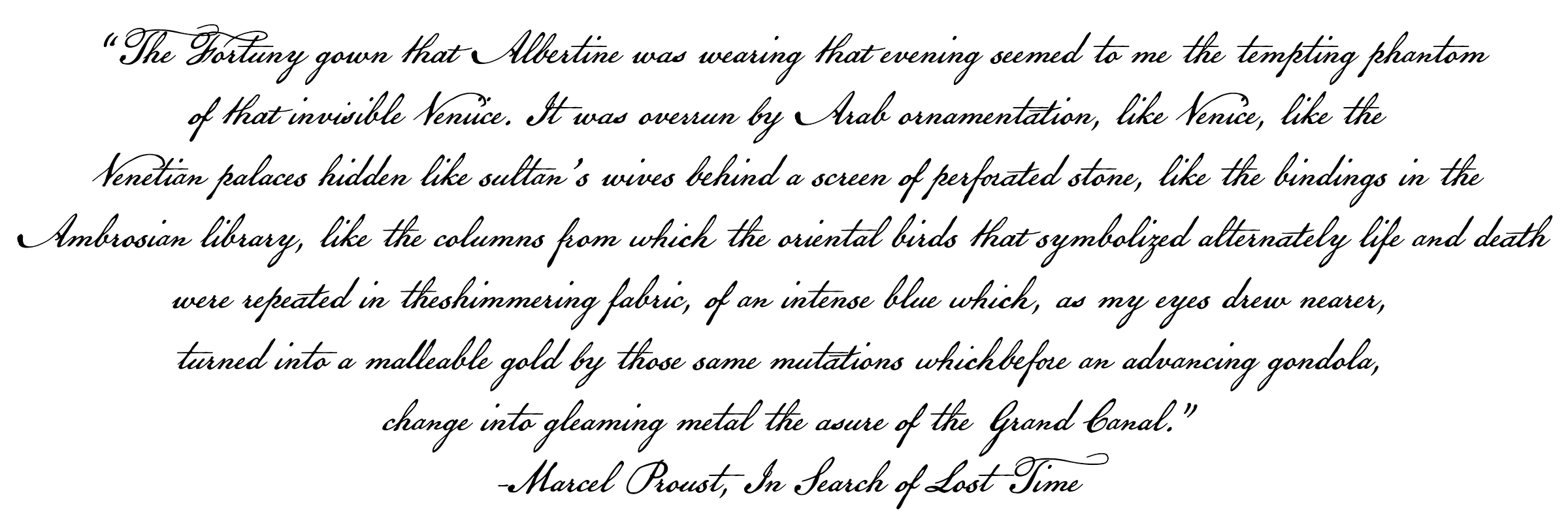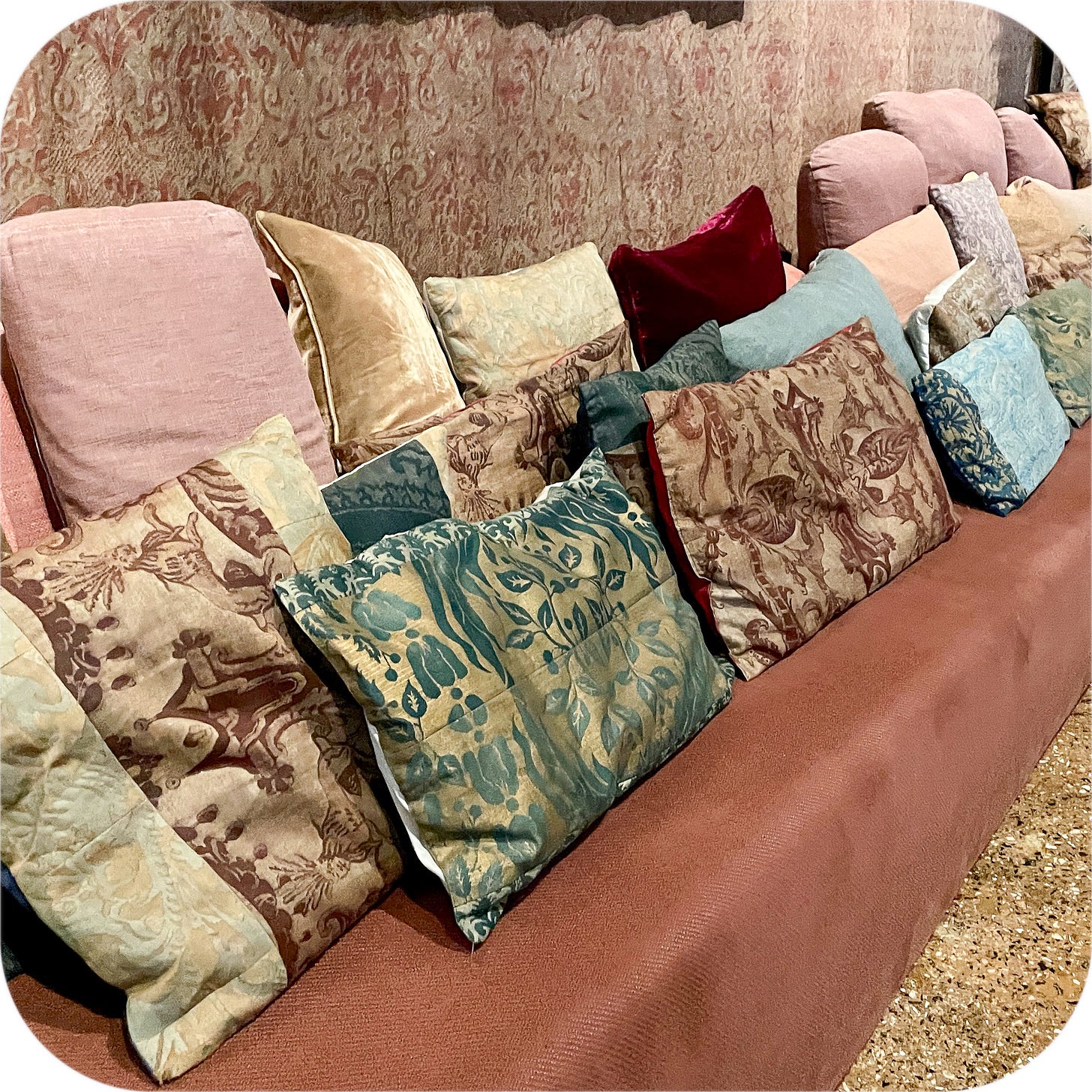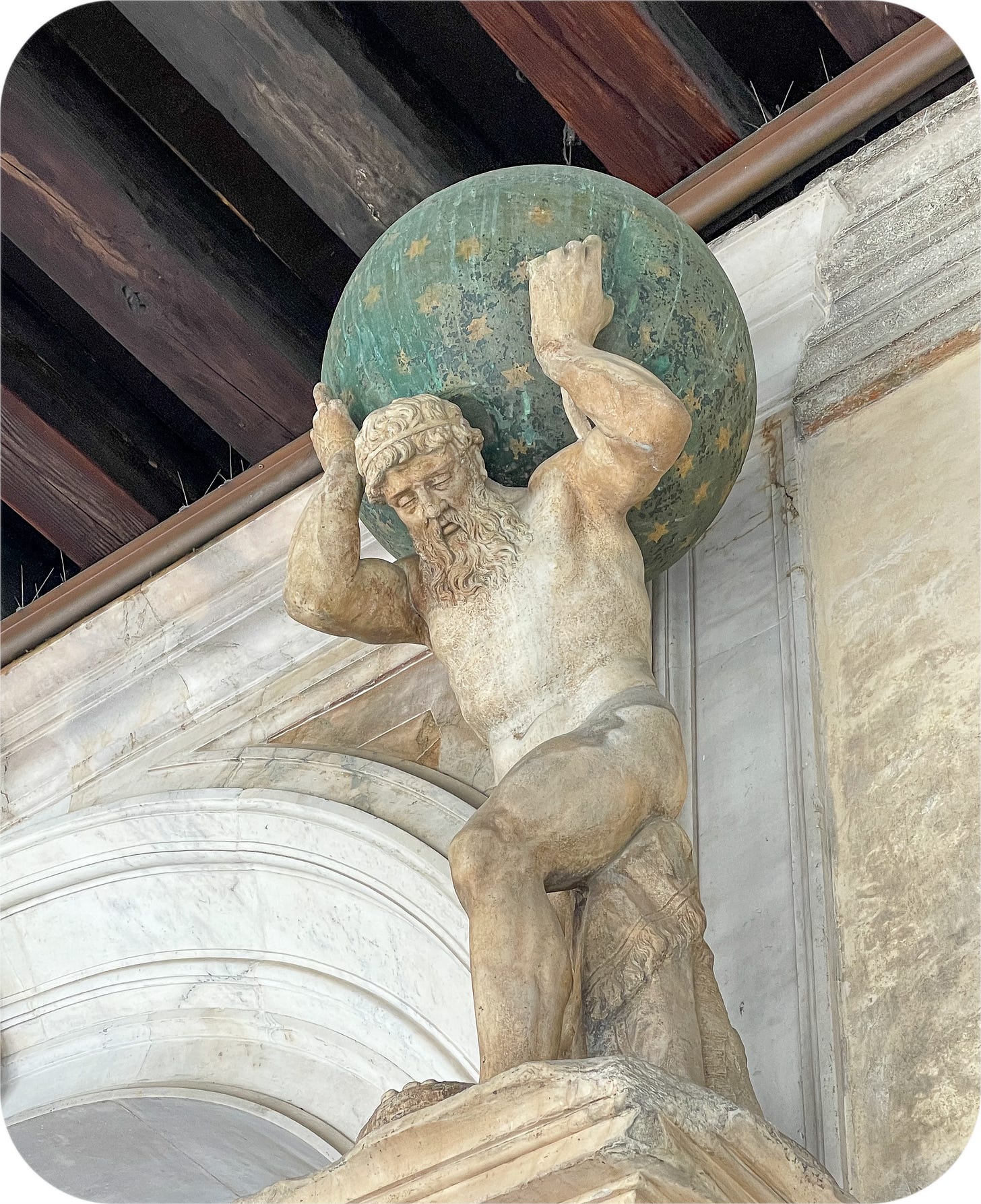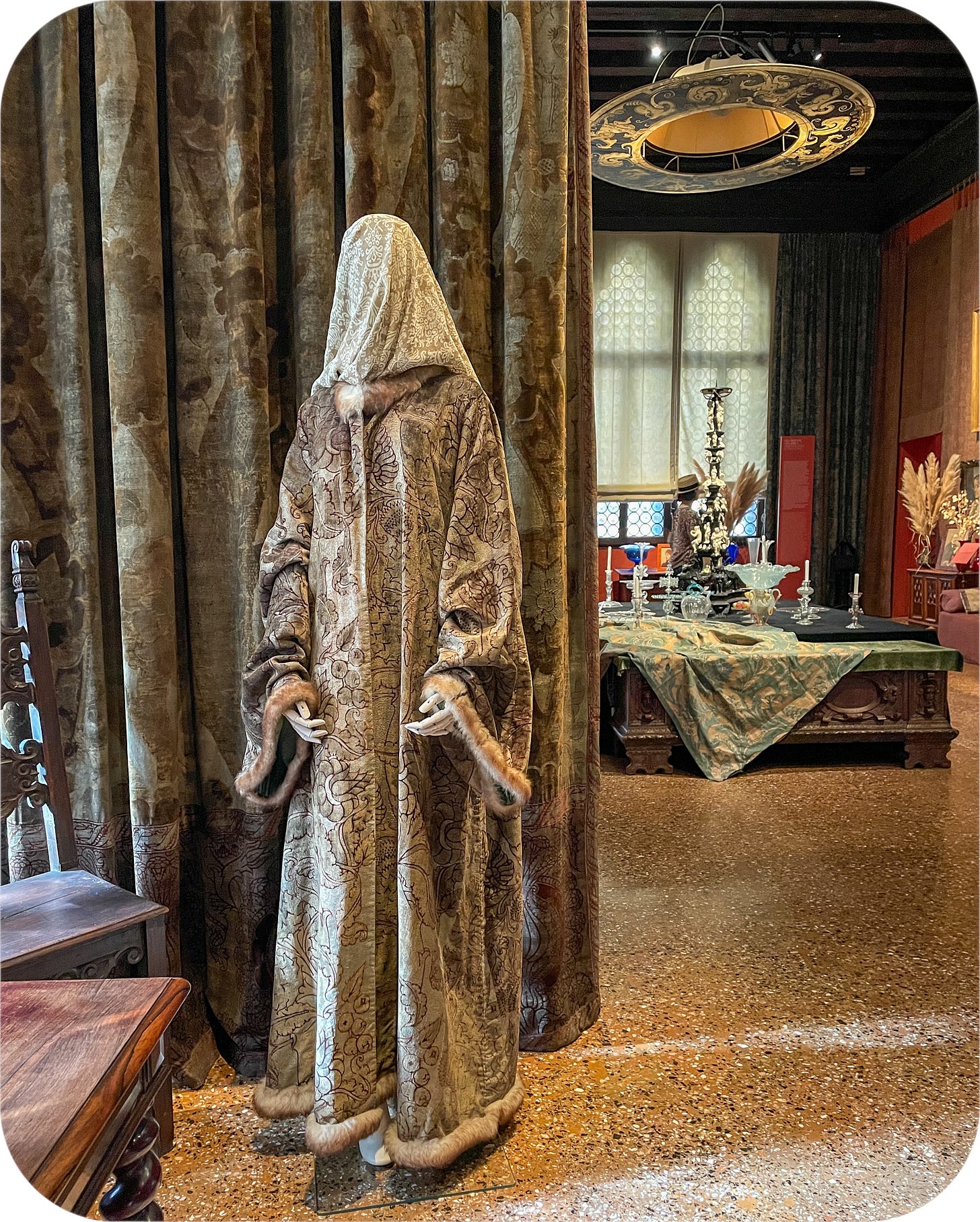{Venice, Italy}
The light in Venice is dazzling.
During the day, the sun shimmers on the Grand Canal, and fills the vast Piazza San Marco with an airy brightness. It illuminates white stone churches and elegant palazzos, and reflects off of the sunglasses of the city’s many tourists.
Behind the sunlit facade, though, there are the in-between spaces: little alleys and sidewalks, endless up-and-down stone staircases and narrow canals…spaces in which throngs of people and skilled gondoliers jostle for position, cool and shadowy spaces with dark corners that fill with fog in the morning, and mysterious spaces that - despite the sun - never seem to get fully bright during.
It is these spaces, the Venice of shadows, that Mariano Fortuny seems to belong.
Inventor. Fabric designer. Fashion designer. Theater designer. Lighting engineer. Photographer. Painter. Sculptor. Etcher. Printer. Entrepreneur. (Handsome devil.)
The Magician of Venice....
Born in Granada, Spain - at the foot of the Alhambra - in 1871, Mariano Fortuny y Madrazo was, in fact, Spanish and not Italian.
His father, who died when Fortuny was just three years old, was one of the most important Spanish painter of his time. His mother came from a long line of painters and artists as well, and was a collector of art and textiles in her own right.
When her husband died, Cecilia de Madrazo moved with her two small children to Paris, where Mariano first learned to paint under the guidance of his maternal grandfather. Fifteen years later, the family moved again. Mariano was 18 years old when he moved to Venice, and he stayed there until his death at the age of 77.
It was in 1898 that Fortuny first moved his painting studio into the top floor of the Palazzo Pesaro Orfei, a neglected 15th-century building that was at the time split up into dozens of artist’s studios and apartments.
As he settled into his new studio, his success as a painter led to commissions for opera and theater sets, including at Milan’s famous La Scala opera house. Immersing himself in the world of theater, he discovered that lighting that had conventionally been used to illuminate theaters wasn’t really doing his sets - or the productions - justice. He developed and patented a system of theater lighting that was based on indirect and reflective light, and lamps that allowed light to be more easily controlled - to allow portions of the stage to be illuminated while others stayed in shadow. The system was eventually utilized by all of the major theaters and opera houses throughout Europe.
Meanwhile, Fortuny acquired space bit by bit in the Palazzo Pesaro Orfei, and slowly started renovations on the structure. By 1906 he owned the entire structure. He demolished walls, so that each floor of the palace was dominated by a large gallery running the length of the space, with bottle glass windows at each end. A series of smaller rooms ran along either side of the galleries - rooms that he used as studios and workrooms and workshops, where he could build lamps and lighting systems, and paint, and experiment in sculpture, photography, etching and printing.
In 1907 he moved in, and the studio became his home, as well - a home he stayed in until his death in 1949.
Let’s go back in time for a moment, though.
In 1897, while Fortuny was still living in Paris, he met a young artist’s model named Henriette Negrin. By 1902, Henriette had moved to Venice to live with Fortuny, and within a few years after that she became his business partner (and in 1924 his wife).
And although it is the name Fortuny that is famous, it was his partnership with Henrietta that produced the products for which the Fortuny name is known today.
Keep reading with a 7-day free trial
Subscribe to Beautiful Things: Letters from Abroad to keep reading this post and get 7 days of free access to the full post archives.









